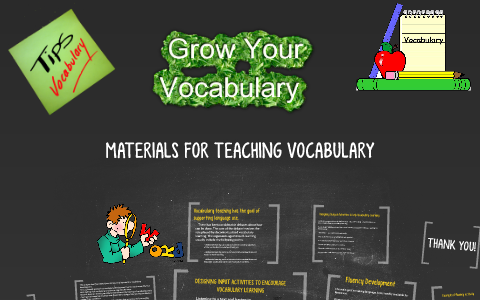Great Facts On Deciding On Italian Nursery Teaching Support
Wiki Article
What Are The Top Educational Aids, Manipulatives, As Well As Visual Aids To Italian Preschoolers?
Italian nursery schools benefit from a variety of tools that support the development and learning of their pupils. Here are some examples of suitable materials that can be used for manipulatives. Manipulatives are items that children utilize to investigate, learn and build their problem-solving and fine motor skills. Examples of manipulatives that might be suitable for Italian kindergartens are pegboards, blocks, puzzles playing sorting games, as well as stacking toys.
Visual aids. Visual aids can help your child learn concepts and will also help in their language development. Visual aids for Italian Nursery Schools include charts, illustrations, flashcards, posters and maps.
Educational technology: Educational technology can help students learn and provide extra resources for students. Italian nursery school technology examples include tablets with touchscreens, educational apps and interactive whiteboards.
In Italian nursery schools, it is crucial that all materials used in education are age-appropriate and safe. Also, they must be culturally appropriate. Material selection should take into account the individual's interests and needs. Teachers and caregivers at the nursery school must regularly evaluate and update the materials they employ to ensure that they remain engaging and effective for their students. Check out the best materiale didattico italiano for blog info.

What Maths Educational Cards Are Highly Recommended By Italian Schools?
Educational math cards can introduce young children to basic concepts in Italian kindergartens. Maths didactics cards are useful for teaching children basic math concepts. They could feature images of objects or animals which represent numbers to make the learning experience more engaging.
Shape cards are an excellent way to help your child learn about the different shapes. For instance they can show them how to recognize and explain triangles, squares, and circles. They can feature illustrations of real objects that illustrate every shape.
Color cards: Children can learn to identify colors by using color cards. These cards can have illustrations of objects that are highlighted by one color. They will engage children more.
Counting Cards: A counting card are a great way to teach children how to count 1-10, or higher. Counting cards may be illustrated to include objects or animals as the representation of each number.
Time cards. Time cards are a great way to teach children the names and dates of months and weeks. The cards could include illustrations of clocks or calendars to enhance the learning experience.
Maths didactics need to be fun and interactive, as well as appropriate for children of all ages. Teachers and caregivers can utilize these cards to develop fun and interactive Maths activities that stimulate kids' curiosity and enthusiasm to learn. Take a look at the recommended materiale didattico matematica sostegno for website examples.

What Kinds Of Science-Related Materials Will Italian Schools Require To Help Their Teachers?
In Italian nurseries, science teaching materials can help children discover and discover the world. Here are some examples of the teaching of science materials that might be required curriculum and lesson plans: A well developed program and lesson plan that incorporates concepts of science can help expose children to a wide spectrum of scientific concepts and abilities.
Manipulatives (and visual aids): Manipulatives, such as magnifying spectacles, nature specimens, simple kit for experiments in science, as well as charts and posters, can assist in teaching children concepts of science through a hands-on, interactive approach.
Videos and books. The books that cover subjects related to science, like animals, plants, weather and space, are great to engage children as well as providing additional resources.
Outdoor spaces for learning. Gardens and playgrounds are excellent places for children to explore the natural world.
Parental involvement: Involving the parents in the science curriculum could help reinforce concepts that are learned in nursery. This also promotes the involvement of parents and children.
Assessment tools: Assessment tools help teachers and caregivers monitor children's progress and identify areas where additional support may be needed.
It is essential that the tools used in science education are appropriate for children of all ages. Teachers and caregivers can to use these materials to design exciting, interactive science projects for kids that encourage their curiosity and passion for education. Follow the most popular materiale didattico scienze for website tips.

What Materials For Teaching Geography Are Needed In Italian Nurseries?
Geography teaching materials at Italian nurseries can aid children gain a better awareness of the world around them, and also learn about various cultures and the environment. Here are some examples of teaching materials for geography that are recommended Maps: Maps aid children in understanding the geography of different nations and regions, and the exact location of landmarks and natural features.
Globes are a great way for children to perceive the earth's surface as well as learn about the various oceans and continents.
Videos and pictures Videos and pictures of different places and cultures can help children learn about the variety of the world and build a love for different ways of life.
Books: Books that feature different cultures and places can encourage children to develop an interest in the world of geography and an awareness of curiosity about the world.
Natural substances. Materials such as shells and plants are great to teach children about ecosystems.
Field trips: A field trip to local parks, museums, zoos and Zoos offer children an experience that is hands-on and gives them the chance to explore geography in a more realistic setting.
It is essential to choose the right materials for teaching geography that are appropriate for children of all ages as well as culturally sensitive. Teachers and caregivers are able to use these materials in order to design exciting, interactive geography lessons that stimulate children's curiosity and curiosity.
